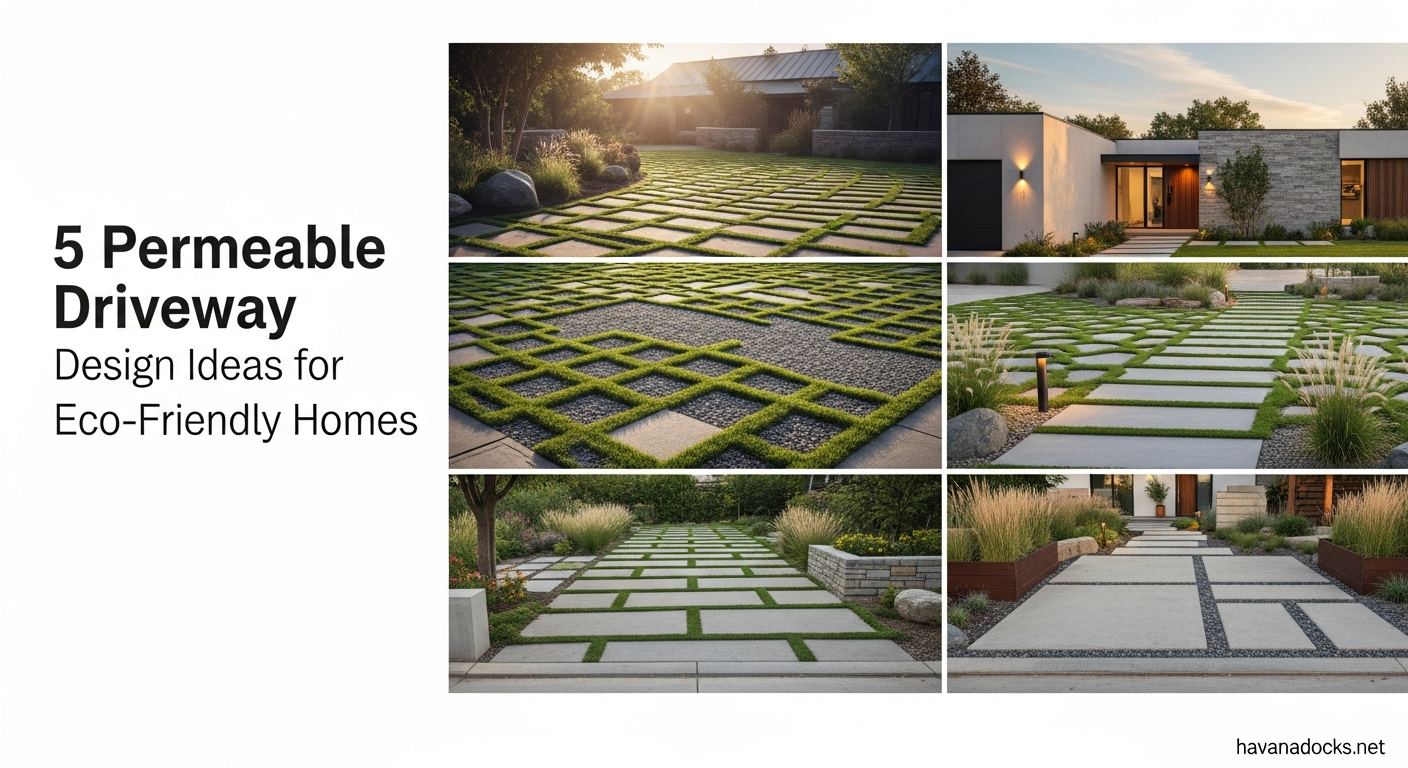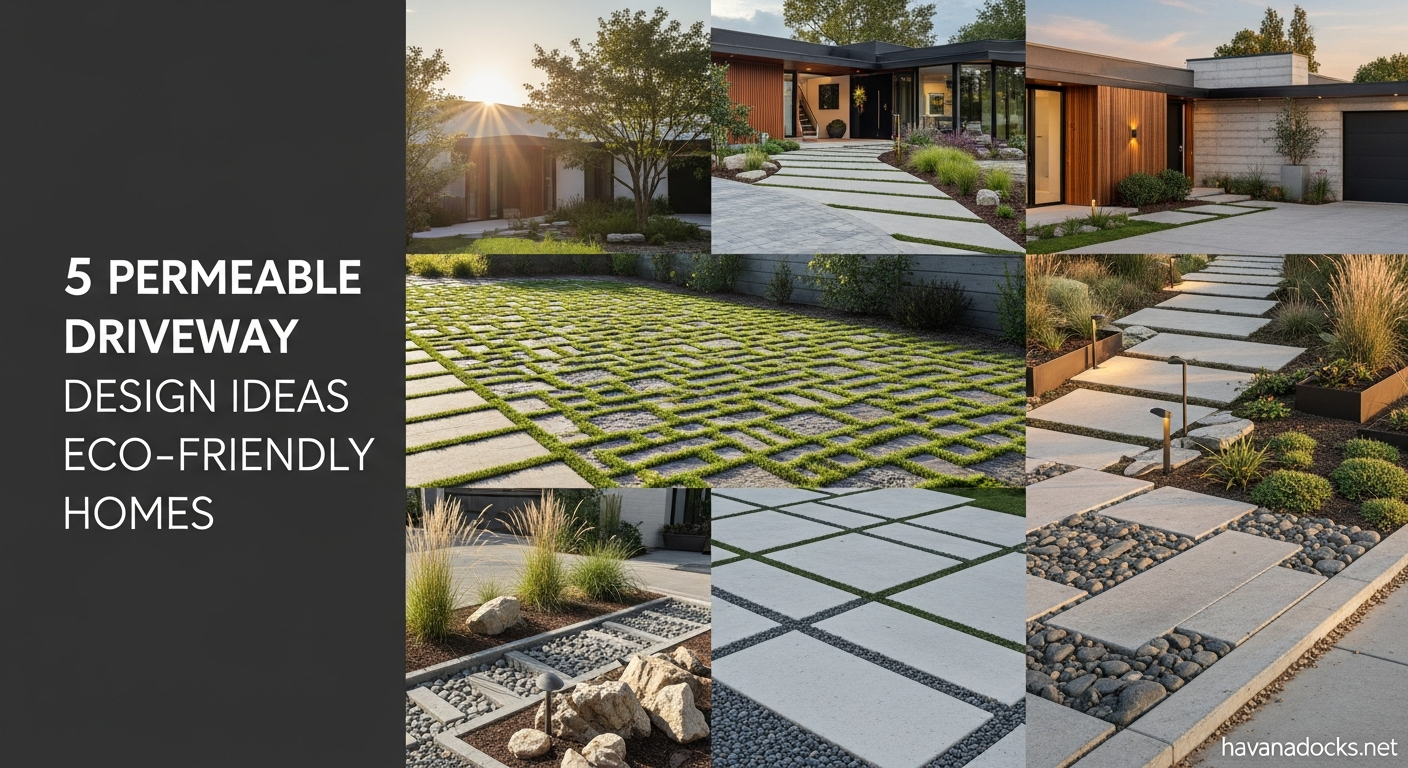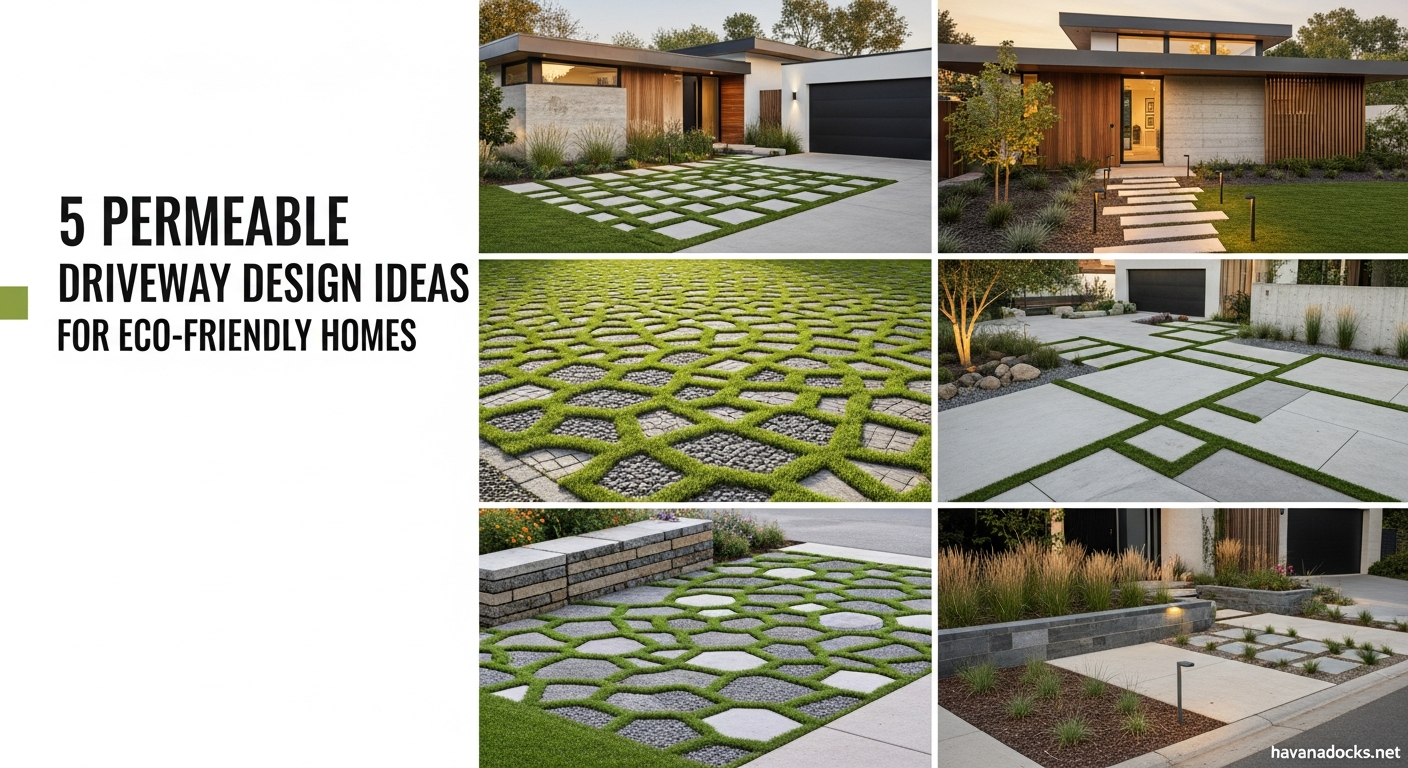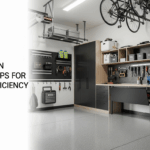Understanding Permeable Driveway Design
5 Permeable Driveway – Permeable driveways are designed to allow water to pass through the surface and drain into the ground below, mimicking the natural process of rainwater absorption. This contrasts with traditional impermeable surfaces, such as asphalt or concrete, which prevent water from infiltrating the soil and contribute to stormwater runoff. Permeable driveway design is crucial for effective water management.
The principle behind permeable pavements lies in their construction. Instead of a solid, impervious surface, they utilize materials with interconnected voids that allow water to flow through. This water then percolates through a sub-base of gravel or crushed stone, which filters out pollutants and returns the water to the ground.

Benefits of Choosing Permeable Pavements
- Reduced Stormwater Runoff: Minimizes flooding and erosion by allowing rainwater to infiltrate the ground.
- Improved Water Quality: Filters out pollutants and sediments, reducing contamination of local waterways.
- Reduced Heat Island Effect: Permeable pavements reflect less heat than traditional surfaces, helping to keep surrounding areas cooler.
- Groundwater Recharge: Replenishes groundwater supplies, which is essential for maintaining healthy ecosystems and water resources.
- Reduced Ice Formation: In colder climates, permeable pavements can reduce ice formation by allowing water to drain away quickly.
- Enhanced Aesthetics: Offers a variety of design options to complement any home style.
- Potential Cost Savings: May reduce the need for extensive drainage systems, leading to cost savings in the long run.
Types of Permeable Pavement
Several types of permeable pavements are available, each with its own characteristics and benefits:
- Permeable Pavers: Individual units made of concrete or other materials with spaces between them.
- Porous Asphalt: Asphalt with open voids that allow water to pass through.
- Porous Concrete: Concrete with open voids, also known as pervious concrete.
- Gravel Driveways: Loose gravel that allows water to infiltrate the ground.
- Plastic Grids: Plastic grids filled with gravel or other materials to create a stable and permeable surface.
5 Permeable Driveway Design Ideas for Eco-Friendly Homes
Let’s explore five compelling permeable driveway design ideas that can significantly enhance your eco-friendly home.
1. Permeable Paver Driveway: Classic Elegance
Permeable pavers offer a wide range of design possibilities. They come in various shapes, sizes, colors, and textures, allowing you to create a driveway that complements your home’s architectural style.
- Interlocking Pavers: These pavers interlock to create a durable and stable surface. They are easy to install and maintain.
- Concrete Pavers: A popular choice for their durability and affordability. They are available in a variety of styles.
- Clay Pavers: Offer a classic and natural look. They are more expensive than concrete pavers but provide excellent durability.
- Stone Pavers: Provide a natural and rustic look. They are a durable and long-lasting option.
Consider the overall aesthetic you want to achieve and choose pavers that complement your home’s exterior. Using different colors or patterns can add visual interest to your driveway. Remember that permeable driveway design should always prioritize functionality alongside aesthetics.
2. Gravel Driveway: A Rustic Charm
Gravel driveways offer a cost-effective and natural solution for permeable driveway design. They are easy to install and maintain, providing excellent drainage.
- Crushed Stone: Offers good drainage and stability.
- Pea Gravel: Provides a softer and more decorative look.
- Decomposed Granite: Creates a smooth and stable surface.
Ensure that you use a proper base layer to prevent the gravel from sinking into the soil. Consider adding edging to contain the gravel and prevent it from spreading onto your lawn or garden beds. Regular raking will keep your gravel driveway looking its best.
3. Porous Asphalt Driveway: Modern Functionality
Porous asphalt is a durable and long-lasting option for permeable driveway design. It provides excellent drainage and can handle heavy traffic.
- Durable: Can withstand heavy loads and traffic.
- Long-lasting: Offers a long lifespan with proper maintenance.
- Excellent Drainage: Allows water to drain quickly and efficiently.
Porous asphalt requires professional installation to ensure proper drainage and structural integrity. Regular cleaning is essential to prevent clogging and maintain permeability. While not as visually diverse as pavers, porous asphalt provides a sleek and modern look.
4. Plastic Grid Driveway: The Invisible Solution
Plastic grids offer a stable and permeable surface that can be filled with gravel or grass. They are an excellent option for creating a driveway that blends seamlessly with the surrounding landscape.
- Gravel-Filled Grids: Provides a stable and permeable surface while allowing for a natural look.
- Grass-Filled Grids: Creates a green driveway that blends seamlessly with the lawn.
Plastic grids are easy to install and provide excellent drainage. They are a great option for achieving a sustainable and visually appealing driveway. The type of fill (gravel or grass) will significantly affect the maintenance requirements.

5. Porous Concrete Driveway: A Sustainable Choice
Porous concrete, also known as pervious concrete, is a durable and permeable paving material made from a mixture of cement, water, and coarse aggregate. Unlike traditional concrete, it lacks the fine aggregates that fill the voids, creating an open-pore structure that allows water to pass through. Porous concrete can be an excellent solution for permeable driveway design.
- Environmental Benefits: Reduces stormwater runoff and promotes groundwater recharge.
- Durability: Can withstand heavy traffic and extreme weather conditions.
- Aesthetics: Offers a variety of design options to complement any home style.
Porous concrete requires professional installation and maintenance to ensure proper functionality and longevity. Regular cleaning is essential to prevent clogging and maintain permeability.
Key Considerations for Your Permeable Driveway Project
Implementing a permeable driveway design requires careful planning and execution. Here’s what you need to consider:
Site Assessment
Before embarking on any permeable driveway project, a thorough site assessment is crucial. This involves evaluating the soil type, slope, drainage patterns, and local regulations.
- Soil Type: Determine the soil’s ability to absorb water. Sandy soils are generally more permeable than clay soils.
- Slope: Consider the slope of your property and how it will affect drainage. A steeper slope may require additional drainage measures.
- Drainage Patterns: Identify existing drainage patterns and ensure that your permeable driveway will not disrupt or negatively impact them.
- Local Regulations: Check with your local authorities for any regulations or permits required for permeable pavement installations.
A proper site assessment will help you determine the best type of permeable pavement for your property and ensure that it functions effectively.
Design & Planning
Careful design and planning are essential for a successful permeable driveway design. Consider the following factors:
- Size and Shape: Determine the appropriate size and shape of your driveway based on your needs and the layout of your property.
- Traffic Load: Consider the amount of traffic your driveway will need to handle and choose a pavement material that can withstand the load.
- Aesthetics: Select a pavement material and design that complements your home’s architectural style and enhances your curb appeal.
- Drainage System: Design a proper drainage system to ensure that water is effectively filtered and returned to the ground.
- Maintenance Plan: Develop a maintenance plan to keep your permeable driveway functioning properly and looking its best.
Installation Process
The installation process for permeable driveways varies depending on the type of pavement material used. However, some general steps are common to most installations:
- Excavation: Excavate the area for the driveway to the required depth.
- Base Preparation: Install a base layer of gravel or crushed stone to provide drainage and support for the pavement.
- Pavement Installation: Install the permeable pavement material according to the manufacturer’s instructions.
- Joint Filling: Fill the joints between pavers with sand or gravel to stabilize the surface and allow for drainage.
- Compaction: Compact the surface to ensure that it is level and stable.
Professional Installation vs. DIY
Deciding between professional installation and DIY depends on your skills, experience, and the complexity of the project. While a DIY approach can save you money, professional installers have the expertise and equipment to ensure a successful and long-lasting installation. Mistakes made during installation can compromise the drainage capabilities and structural integrity of your driveway.
Cost Considerations
The cost of installing a permeable driveway can vary depending on the type of pavement material, the size of the driveway, and the complexity of the project. Generally, permeable pavements are more expensive to install than traditional asphalt or concrete. However, the long-term benefits, such as reduced stormwater runoff and improved water quality, can offset the initial cost. Also, consider potential cost savings from requiring less extensive drainage infrastructure.

Maintaining Your Permeable Driveway
Proper maintenance is essential for ensuring the longevity and performance of your permeable driveway design.
Regular Cleaning
- Sweeping: Regularly sweep your driveway to remove debris, leaves, and other materials that can clog the surface.
- Vacuuming: Use a vacuum cleaner or a leaf blower to remove smaller particles from the voids.
- Pressure Washing: Periodically pressure wash your driveway to remove stubborn stains and debris.
Preventing Clogging
- Avoid Salt Application: Salt can damage permeable pavements and contribute to clogging. Consider using alternative de-icing methods.
- Prevent Soil Runoff: Prevent soil runoff from nearby garden beds or lawns from entering your driveway.
- Regular Inspection: Regularly inspect your driveway for signs of clogging or damage and address any issues promptly.
Seasonal Maintenance
- Spring: Thoroughly clean your driveway after the winter to remove any accumulated salt, sand, or debris.
- Fall: Remove leaves and other organic matter from your driveway before they decompose and clog the surface.
- Winter: Use caution when applying de-icing products to avoid damaging your permeable pavement.
By following these maintenance tips, you can keep your permeable driveway functioning properly and looking its best for years to come.
Conclusion
Choosing a permeable driveway design is an investment in a sustainable future. These eco-friendly solutions not only enhance the beauty of your home but also contribute to a healthier environment by managing stormwater runoff, improving water quality, and reducing the heat island effect. Whether you opt for the classic elegance of permeable pavers, the rustic charm of a gravel driveway, or the modern functionality of porous asphalt, embracing permeable pavements is a step towards a more sustainable and responsible lifestyle. By carefully considering your site conditions, design preferences, and maintenance capabilities, you can create a permeable driveway that adds value to your property and benefits the environment for generations to come.





